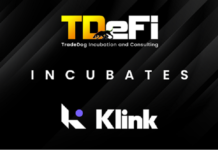The train of blockchain innovation, is no doubt, causing disruption in every industry its goes through. Blockchain and other distributed ledger technologies (DLTs) makes possible, a level of transparency, security and privacy that could only be imagined before now.
Blockchain solutions are now been touted as the future of money, of fintech, supply chain, healthcare. Blockchain is now making major inroads in the very sophisticated, obscure, fraud-prone business of internet advertising.
In an interview with Salih Sarikaya of Smarterum TV, Rebecca Lerner discussed the problems faced in programmatic advertising and how blockchain can reform the industry. Lerner is the Vice President of MAD Network, a key player using blockchain to transform the ad tech space.
The Problem with Programmatic Advertising
Programmatic Advertising, and its underlying protocol, open RTB was once heralded as the way-forward in internet advertising as it enabled open standards for real-time bidding of ad impressions. But as time progressed, this protocol is being manipulated because it was not transparent enough. As Lerner puts it, this lack of transparency causes a sort of ‘prisoner’s dilemma’ where people as incentivized to cheat because no-one sees what’s actually going on.
Privacy is also a big concern in today’s advertising protocols. Lerner explained that personal data of consumers are collected and stored in centralized data management systems and used to target them for ads. So advertisers pay to be able to ‘throw’ ads at the consumer. Goodnews, Lerner says, it’s that blockchain has the ability to reverse this.
The need for Blockchain-enabled Ad Tech
Speaking of her introduction to blockchain, Lerner expressed excitement about how markedly different blockchain solutions were from technologies she had worked with in the past.
“It’s the first time was the first time in a while I could say that we were that the technology that we were working on was doing something other than just improving the bottom line of the company that we’re selling it to.”
She is a firm believer in the potentials of blockchain technology. According to her, blockchain-based innovation that has the potential to recreate the entire advertising value chain by redefining its underlying framework. This is exactly what her company, MAD Network is working to achieve.
“MAD is the first protocol for digital advertising with privacy by design based on blockchain,” she noted.
An overview of MAD Network
The team at MAD network not only believe that ‘Privacy is a human right’, they have made it a duty to build a privacy-first ad protocol.
Lerner explained that most blockchain projects in the media space were merely auditing the current system. MAD Network, on the other hand, is creating a decentralized protocol—a system built on true trust. She explains:
“What we’re doing is actually decentralizing…by replacing the fundamental protocol that programmatic is built on called openRTB [Real Time Bidding]…with something better that allows for true decentralization and therefore true trust”
How does this work?
MAD ad protocol reverses the present system to place control in the hands of the user. Instead of “‘I know who you are I’ll push the advertising to you’ its is ‘I know who I am and I will pull the advertising in to me when it’s best what is best for me.’”
Instead of buying user data, an advertiser deploys a machine learning model across the MAD blockchain and pay an ‘agent’ that lives on the user’s device to run that model. If the user is within the advertiser’s target group, then the user’s agent would actually work on the user’s behalf to pull in the advertising.
MAD Token Sale and Roadmap
MAD network raised $25 million from the Initial Coin Offering for its ERC20 token, MAD which took place from February 28 to March 1, 2018. The project led by Adam Helfgott is totally open source and is currently on the second version of its technical, some proof of concepts, and updating its code library.
INTERVIEW TRANSCRIPT [edited]
Salih: Hi Rebecca, how are you today?
Lerner: Good, how are you?
Salih: Good, thank you. So can you please tell us about yourself?
Lerner: I’m Rebecca Lerner. I’m the executive Vice President of Strategy at Mad Network and I’m here today.
Salih: So, what brought you into blockchain?
Lerner: I’ve been in the enterprise tech space for many many years and I was working at a small company which we had an exit. And I was I talking with one of the investors who came to me and said, hey, I have been working on this blockchain project with someone that I think you would really work well it love to introduce you and maybe see if you want to do some consulting work. Not sure how much you know about this blockchain thing, which was next to nothing at the time–about two and a half years ago. And he introduced me to my present boss Adam Helfgott who I love just loved working with and really thought the space was super-interesting.
It’s the first time was the first time in a while I could say that we were that the technology that we were working on was doing something other than just improving the bottom line of the company that we’re selling it to. So we’re pretty excited about it.
MAD is the first protocol for digital advertising with privacy by design based on blockchain obviously.
Salih: Okay, so what problem mainly you are solving?
Lerner: There’s a lot of problems in programmatic advertising if you ask anybody but one of the main problems that we’re solving is trust and we’re doing that by putting privacy first. So, instead of just trying to audit the system the way a lot of blockchain projects in the media space are doing, what we’re doing is actually decentralizing; trying to decentralize the system by replacing the fundamental protocol that programmatic is built on called open RTB (Real Time Bidding). We’re trying to replace that protocol with something better that allows for true decentralization and therefore true trust
Salih: Can we please explain it for someone doesn’t know anything about advertising (ad tech) and blockchain; how can you describe it?
Lerner: Ad-tech is very very complicated. And it is set up in a way that does not enable real trust because it’s completely opaque and one of the major challenges around that is that because it’s opaque.
It creates this scenario which is like a prisoner’s dilemma (you may remember from like econ 101). What this means is that when you don’t when there’s so much transparency that you can’t know what other people are doing you’re incentivized to cheat. And so what’s happening right now is that because there’s no transparency in the system people are cheating just to stay alive—and if you don’t cheat you will die. We’re trying to create a scenario which disincentivizes that kind of behavior by creating by creating transparency between the business entities but privacy for their consumer.
Salih: What’s the future of Ad tech with blockchain? Like how will your system change the current system?
Lerner: Today, all the data sits in the middle right you know in like in what they call a data management system. When an advertiser wants to target a consumer a certain type of consumer let’s say moms who buy green, they actually go and they buy your data so that they know who you are and then they pay for you. They pay to be able to target you and what and they’re actually buying and obtaining your data they know everything about you, literally. Where you are; what you book; what you buy; what you eat; where you live; if you have kids; if you don’t have kids; they know all of that information about you. Actually specifically you and all that data is like they own it.
What we are trying to do is, instead of having the data live in the middle we’re having trying to have the data live at the edges in your own devices. So, instead of when an advertiser then goes and buys your data what they would do is they would deploy a machine learning model across our blockchain and pay an ‘agent’ that lives on your device to run that model and if you are part of the desired cohort then that agent would actually work on your behalf to pull in the advertising to you as opposed to what happens today which is ‘I know who you are I’ll push the advertising to you’. It says oh I know who I am and I will pull the advertising in to me when it’s best what is best for me.
Salih: Can we talk about a little bit about your ICO and also and how much you raised?
Lerner: We raised twenty-five million USD
Salih: Okay, and what’s your roadmap right now?
Lerner: Right now we’re in the process of releasing our second technical whitepaper and a bunch of code libraries that we’re contributing to the community because an entirely open source project. We are also in the process of green-lighting a couple POCs (Proof of Concepts) with some very large agency and brand partners to start testing the software
Salih: Okay, thank you so much.
Lerner: Thank you, I appreciate.
Husband, Father, Friend | Writer at TowardsDataScience and Hackernoon | Salih Sarikaya is a data &product & media professional with many years of experience | Top Tech Influencers of USA (CES2017-Onalytica) | Key Blockchain Influencer (Business Insider, DisruptorDaily, TokenTarget, KLOUT, MOZ) | Entrepreneur | Author | Pro Member of PEN America & SPJ | Computational Sociology MA









